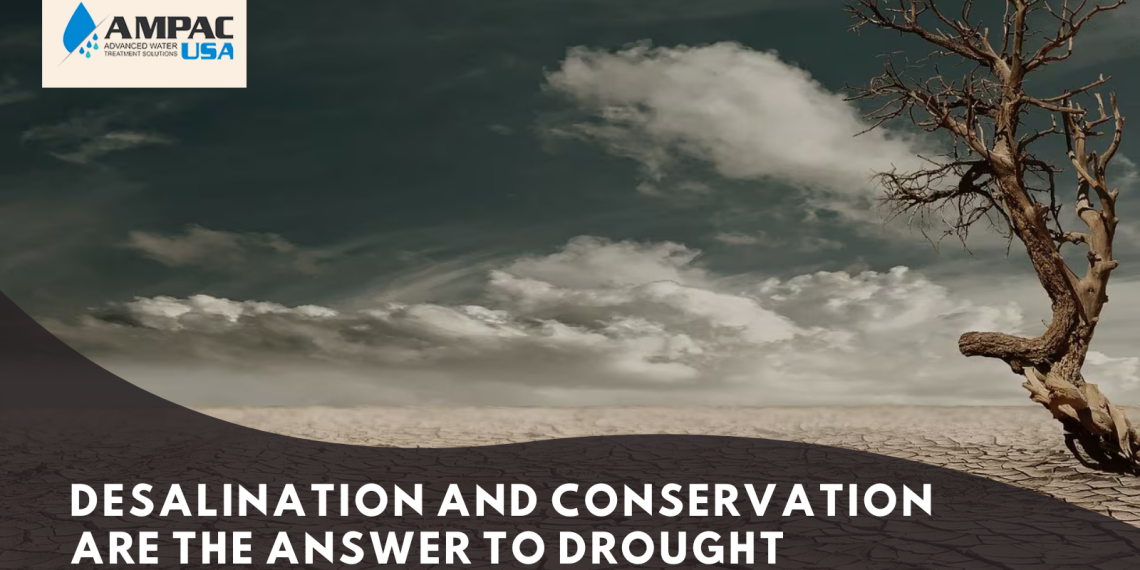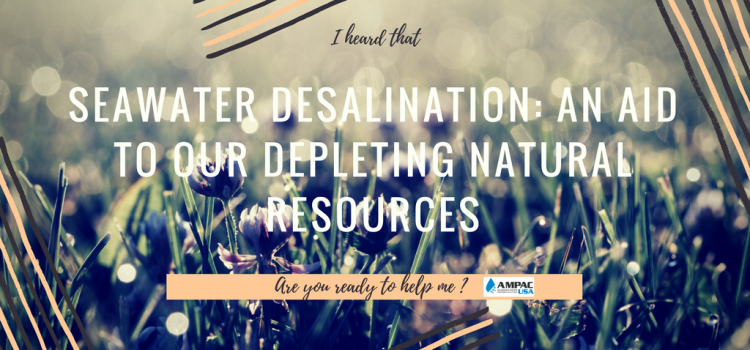The world faces an escalating water crisis. As climate patterns shift and populations grow, droughts have become more frequent and severe, threatening agriculture, ecosystems, and human survival. At the core of our response to this crisis are two powerful strategies: desalination and water conservation. Together, they form a formidable approach that not only mitigates drought but also builds resilience for a water-secure future.
What Makes the Modern Drought Challenge So Severe?
Drought is not merely a lack of rainfall. It is a complex environmental and societal issue compounded by overuse, mismanagement, and climatic changes. In many regions, particularly arid zones like California, Australia, the Middle East, and parts of Africa, prolonged dry spells are now the norm rather than the exception. Reservoirs dry up, rivers slow to a trickle, and aquifers are depleted faster than they can recharge.
Yet despite these realities, water demand continues to rise. Urban expansion, agricultural irrigation, industrial usage, and energy production all require vast quantities of water. Without innovative solutions, traditional water sources alone can no longer meet our needs.
Desalination: A Reliable Source of Fresh Water
What Is Desalination?
Desalination is the process of removing salts and minerals from seawater or brackish water, rendering it fit for human consumption, agriculture, and industrial use. Modern desalination is primarily accomplished through reverse osmosis (RO) and thermal distillation technologies.
The Global Expansion of Desalination
As of today, over 20,000 desalination plants operate across more than 150 countries, collectively producing more than 100 million cubic meters of fresh water daily. Nations like Saudi Arabia, Israel, the United Arab Emirates, and Singapore have led the way, transforming their water security through large-scale seawater desalination infrastructure.
In Israel, for example, over 80% of the country’s domestic water supply comes from desalination, making it a global leader in water independence. Similarly, California has invested heavily in desalination to support its coastal cities, particularly during multi-year drought periods.
Advantages of Desalination
- Unlimited Source: The oceans hold 97% of the planet’s water. Desalination taps into this virtually limitless resource.
- Resilience to Climate Variability: Unlike rainfall or river flow, seawater availability is consistent, making desalination highly reliable during droughts.
- Scalability: Modular desalination units allow flexible scaling, serving small communities or large metropolitan centers alike.
- Technological Innovation: Advances in RO membrane technology and energy recovery have dramatically reduced the cost and environmental footprint of desalination.
Water Conservation: Reducing Demand from the Ground Up
The Power of Efficiency
While desalination addresses supply, conservation tackles demand. Water conservation involves strategies and technologies that minimize water waste, optimize use, and ensure sustainability. It is often the cheapest and fastest way to extend water supplies, particularly in drought-prone regions.
Smart Agricultural Practices
Agriculture accounts for roughly 70% of global freshwater use. Implementing precision irrigation systems, such as drip and micro-spray systems, can reduce water use by up to 60% while increasing crop yields. Other strategies include soil moisture sensors, cover cropping, and drought-resistant crop varieties.
Urban Water Efficiency
Cities are embracing low-flow fixtures, dual-flush toilets, greywater recycling systems, and smart metering to cut residential and commercial water usage. Landscape redesign with native and drought-tolerant plants—also known as xeriscaping—is increasingly common in arid areas.
Integrating Desalination and Conservation: A Holistic Solution
The true strength lies in combining these approaches. Desalination alone cannot solve the drought crisis, especially given its capital and energy costs. But when paired with aggressive conservation efforts, it forms a sustainable water management strategy that meets immediate needs while preserving natural ecosystems.
Case Study: Australia’s Millennium Drought Response
Between 1997 and 2009, Australia faced the Millennium Drought, one of the most severe in its recorded history. In response, the country launched an ambitious campaign that included:
- Construction of six major desalination plants in key urban centers.
- Introduction of strict water restrictions and tiered pricing models.
- Incentives for rainwater tanks, efficient appliances, and landscape retrofits.
- Public education campaigns to shift cultural norms around water use.
The result was a significant drop in per capita water consumption, even after the drought ended—proving that behavioral change is achievable at scale.
Addressing Desalination’s Environmental and Economic Concerns
Critics often point to the energy intensity and brine discharge of desalination plants. However, technological progress is rapidly mitigating these impacts:
- Energy recovery systems now reclaim up to 50% of the energy used in reverse osmosis.
- Plants are increasingly powered by renewable energy sources, including solar and wind.
- New methods for brine dilution and resource recovery (e.g., extracting lithium and other minerals) are transforming waste into value.
With proper regulation and innovation, desalination is becoming cleaner, cheaper, and more sustainable.
Policy, Infrastructure, and Public Engagement
Sustainable water solutions require government leadership, robust infrastructure investment, and community participation. Policymakers must:
- Prioritize funding for desalination research and deployment.
- Support incentives for water-saving technologies.
- Develop tiered pricing systems that reward conservation.
- Facilitate regional cooperation on water-sharing agreements.
Meanwhile, public awareness campaigns must underscore that every drop counts. Cultural shifts in consumption behavior, driven by education and example, are essential to long-term success.
Conclusion: A Blueprint for a Water-Secure Future
The reality is clear: droughts are intensifying, and traditional water sources are no longer enough. Desalination and conservation are not just reactive measures—they are proactive investments in the health, stability, and resilience of our societies.
By embracing advanced water technologies and fostering a culture of responsible water stewardship, we can overcome the growing threats of water scarcity. The fusion of desalination and conservation offers a reliable, scalable, and sustainable pathway to navigate an increasingly water-stressed world.
Let us not wait for the next drought to act. The solutions are already within our reach—and the time to implement them is now.










